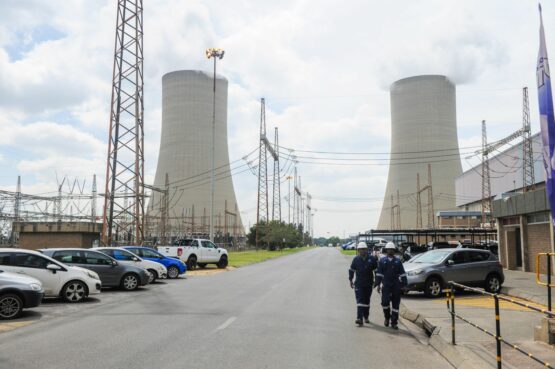Two studies ordered by South Africa’s government into the impact of air pollution on community and child health showed emission limits it imposed on companies that emit the toxins are insufficient.
The studies were undertaken in key industrial regions by academics at the University of KwaZulu-Natal and the Council for Scientific and Industrial Research, a state research agency, and were completed in 2016 and 2019, copies seen by Bloomberg show.
ADVERTISEMENT
CONTINUE READING BELOW
The government didn’t widely publicise the findings, a controversial decision given that it has faced lawsuits over pollution levels and is assessing whether to allow the state power utility to continue violating emission restrictions or enforce laws that could shut plants and worsen energy shortages.
Around the time of the second study’s completion, the government was sued by environmental activists for not enforcing its own laws in the so-called Highveld Priority Area and in 2022 South Africa’s High Court ruled that the government had breached citizens’ constitutional right to clean air. The government has appealed.
In August this year, activists filed another case against the government over pollution in the Vaal Triangle Air-shed Priority Area — which was examined in the first study. Both regions are close to South Africa’s biggest city, Johannesburg, and the capital, Pretoria.
The research adds to evidence of the harm caused by state utility Eskom’s 14 coal-fired power stations, petrochemical plants and oil refineries run by Sasol and Africa’s largest steel mill, owned by a unit of ArcelorMittal SA. The use of coal for domestic cooking and heating adds to pollution levels.
Eskoms Lethabo power station in Vereeniging, South Africa.
The companies have all acknowledged that their emissions impact human health and said they have taken steps to reduce them, although they have in some instances also sought postponements to complying with new limits to be imposed from 2025.
“Adverse health outcomes do occur even below the pollutant standards,” the researchers wrote in the Highveld Study. “These necessitate further investigation and review of the safety of current air quality standards. There is a need for addressing air pollution more rigorously.”
In response to queries, South Africa’s environment department said the Vaal Triangle study area was published in 2016 and “printed copies disseminated to stakeholders.” However, a person familiar with the matter said only the printed copies were made available and no effort was made to circulate the findings more widely. The person asked not to be identified as they aren’t authorised to speak to the media.
The Highveld Priority Area study wasn’t published, although some of its conclusions appeared in the plaintiff’s arguments in the 2019 court case, the department said. That study refers to the Vaal paper as a reference, and says it remained unpublished.
Emission standards
South Africa, which burns coal to generate more than 80% of its power, has considerably laxer emission standards than countries including China and India.
ADVERTISEMENT
CONTINUE READING BELOW
“The South African government allows its citizens to be exposed to air pollution levels that are up to four times higher than what the World Health Organisation recommends,” said Jamie Kelly, an air quality analyst at the Centre for Research on Energy and Clean Air, citing emission limits on particulate matter and nitrogen dioxide. “If the South African government values the health of children and adults, they should impose stricter air pollution standards.”
Both studies conclude that pollution is adversely affecting children’s health, making them more susceptible to allergens, and many had inflamed respiratory tracts that resulted in more instances of asthma and other diseases.
Premature deaths
An info-graphic based on the Highveld study showed the emission of particulate matter in excess of government limits was causing 4 881 premature deaths annually.
The Vaal study pinpointed Sharpeville, which lies close to Eskom’s Lethabo power plant, as the region’s most-affected settlement while the Highveld study said children in Embalenhle, the settlement adjacent to Sasol’s Secunda petrochemical plant, had some of the poorest respiratory health.
The environment department said it’s taking action to cut “the unacceptable levels of air pollution in the Highveld Priority Area and the potentially adverse impacts thereof,” which went beyond tightening emission limits.
The studies were carried out using household surveys and testing lung function of children at primary schools. The department said it doesn’t agree that they had conclusively “established that the death of any particular individual was caused by air pollution.”
In addition to respiratory disease, particulate matter can cause heart disease and birth defects. Other pollutants emitted by the industrial plants include sulfur dioxide, which can cause heart disease and strokes, as well as nitrogen dioxide.
© 2023 Bloomberg

